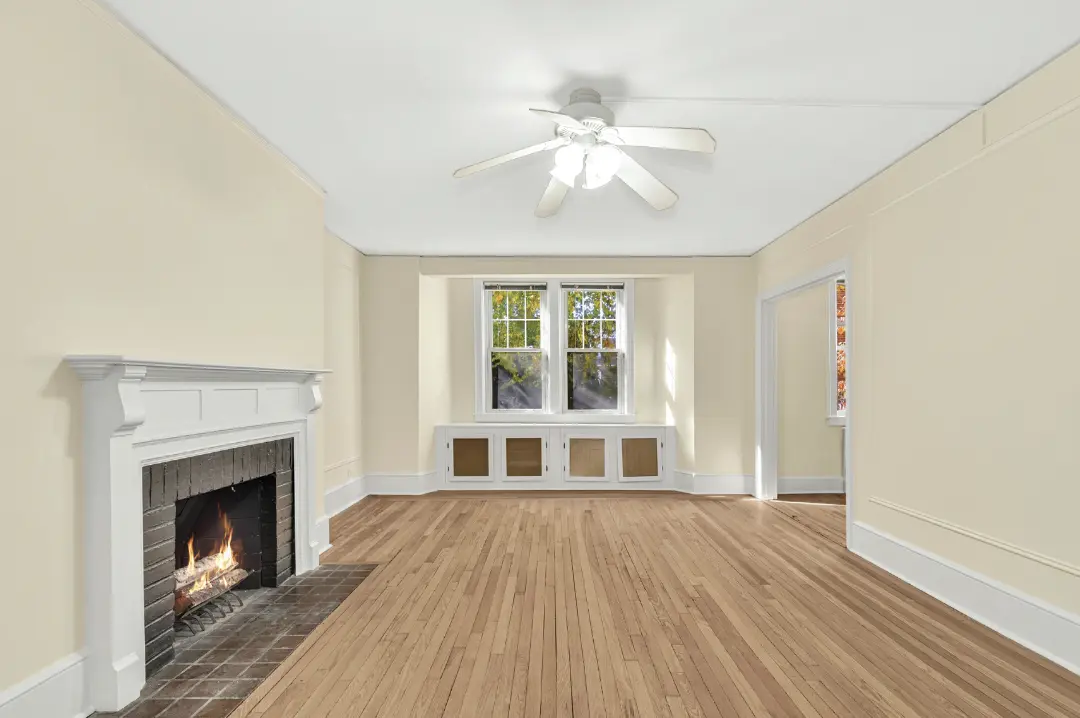By John Engel
Twice this week, builders have asked me, “Why isn’t my new house selling?” It’s painful and expensive.
With monthly carrying costs around $25,000, mistakes get expensive fast.
I’ve written plenty about buyer psychology, staging, showing strategy, copy that sells, and the role of photography.
Houses don’t sell themselves; they need choreography.

Staging matters, and virtual staging misses the mark. It’s a budget-friendly lure that might get buyers in the door, but it can’t compete with the sensory pull of real staging — touch, sound, scent — that turns a house into a home.
Decades of catalogs and online shopping teach us that third-person visuals don’t create the same emotional connection as first-hand experience.
Physical staging draws buyers in. They can sit down, sense the flow, and picture life there. That makes them want to stay.
In 1955, department stores learned that furnished model rooms increased dwell time by 15% and sales by 12%. Shoppers needed to touch the fabric to imagine living there.
By 1987, fast food chains saw that cozy seating kept people 15% longer than sterile layouts. Comfort makes people linger.
In 2013, researchers found that furnished spaces created 25% stronger emotional attachments than empty ones.
You don’t fall in love with a house by pacing an empty box; you need a couch to sink into and a vibe to feel.
Virtual staging, like catalog shopping, may dazzle online, but it disappoints in-person, where sensory gaps leave buyers cold.

In 1958, catalog research found that three to five images per page held attention, but eight or more cut purchase intent by 10%. So why do most MLS listings still stuff in the full 40? This isn’t commodity sales on Amazon, and more photos often hurt more than they help.
In 2018, researchers found third-person visuals, such as catalog photos, reduced emotional connection by 20% compared to first-hand experiences, like walking through a staged home.
In 2023, researchers found online visuals boost views by 40%, but they often backfire when buyers show up to empty rooms. Virtual staging sets expectations it can’t meet. It’s a digital fairy tale with a bad Tinder ending.
Empty homes echo like caverns and smell like a hardware store, while physical staging’s soft acoustics and cozy scents tend to make buyers stay.
In 2017, retail studies showed that soft acoustics from furnishings increased comfort by 12%, while echoey spaces made it drop by 15%.
In 1974, marketers found that food scents, such as fresh-baked bread, increased dwell time by 12% to 20%. It’s a trick of physical staging, and a good Realtor can easily replicate it.
In 2020, researchers found that warm, homey smells, such as wood or candles, created 15% stronger emotional connections than sterile ones.
An empty home’s echo screams ‘construction site,’ not ‘cozy nest.’ And don’t get me started on the paint-fume perfume.
Video? It’s disappointing when that just means a slideshow set to music. Where am I? Which room is this? If you’re not surprising and delighting, they’re clicking out. A slideshow might’ve passed ten years ago. Today, expectations are higher.
Drone footage? It’s a tool: effective in the right hands but not always useful for telling the story. Most homes were not designed to be viewed from above. However, a good drone shot can add drama.
We’re exposed to 5,000 ads a day, ten times more than in the 1970s. To break through, as marketers, we have to raise our game.
Last week, I toured a condo with an older couple. The first part of the tour was practical: How far to the garage? What’s the laundry setup? Where do the groceries go?
They noticed things they’d missed online, like the first-floor powder room.
But when they sat down in the living room with the agents, the conversation shifted to why they’re moving and what really matters in their next home.
Couples don’t always agree. You also start to see who’s really making the decisions. And you hear what they think renovations will cost and where they might be wrong.
There’s always that question: Will there be enough room for everything, even after we let go of what we don’t really need?
In this case, the couple owns more than one home, so they won’t have to live through a renovation.
It mattered that they lingered, allowing them to notice the gas fireplace, the angle of the afternoon sun, the quiet, and the privacy, and to talk about where they’d eat: kitchen island or dining table.
I spoke with one of the builders who decided not to stage his new construction listing. He agreed the photos and video leave buyers wondering, Where’s the furniture? Where am I?
I asked who he thought the buyer would be, and we talked about whether the design choices matched that vision.
Some of the design choices feel like repeats from his playbook 10 or 15 years ago, straight out of a catalog, while others lean modern and edgy. The result is a house that doesn’t quite commit to a point of view, and that makes it harder for buyers to connect.
Staging would have helped to bring coherence and intention to the space. But then, so would an interior designer.
One of our current listings illustrates the other side of the presentation dilemma. The seller hired a great stager, and the result was a noticeable improvement, but the home still carries the weight of personal art and family presence. It’s a halfway presentation: curated but not fully committed. I get it. With a large family, living in a 100% staged home isn’t easy. But for buyers, it sends a mixed signal. It suggests the family isn’t ready to let go, not quite ready to sell. It also suggests a reluctance to fully trust the professionals. And buyers feel that. Presentation isn’t just furniture; it’s permission. It’s telling someone, This home is ready for you, not still waiting for us.
We all like to think we make rational decisions when it comes to buying a home. We look at comps, calculate cost per square foot, and analyze the market trends. But let’s be honest: Most buyers fall in love. No spreadsheet can explain why one house feels right and another doesn’t. And that’s okay.
In fact, it’s essential. We’re not buying homes like we buy stocks, off charts and ratios. We’re buying the place we want to live our lives. And that starts with how it makes us feel.
In the end, we’re not just selling bedrooms and bathrooms; we’re selling the possibility of a new life.
A buyer doesn’t choose a home with a checklist. They choose the one that makes them pause. That feels right. That quiets the noise and lets them imagine their future there. The sooner we accept that real estate is as emotional as it is financial, the sooner we’ll stop treating homes like spreadsheets. You don’t buy a house the way you buy a stock. Charts and comps matter, but only after the heart gets involved.
Our job, whether agent, builder, or seller, is to invite that emotion in.
John Engel is Douglas Elliman’s top broker in Connecticut, a weekly columnist, a weekly podcaster, a daily Instagrammer, a Rotarian, and town-hall volunteer. Last night John Engel and fellow Town Council alum and Engel Team member Christa Kenin participated in New Canaan’s election caucus, connecting with voters, giving and hearing speeches. The good news is that New Canaan defies the trend and keeps it positive, never relying on negative campaigning. The bad news is that only one race was contested this time, turnout was only 311, and the race was decided by 9 votes. John and Christa have experienced the pain of losing elections and it made us better. We want to congratulate Kim Norton on a positive campaign, thank her for her service and hope we’ll see her again in another capacity.
*Catfishing is the art of deception, when the online photos are better than the reality.




